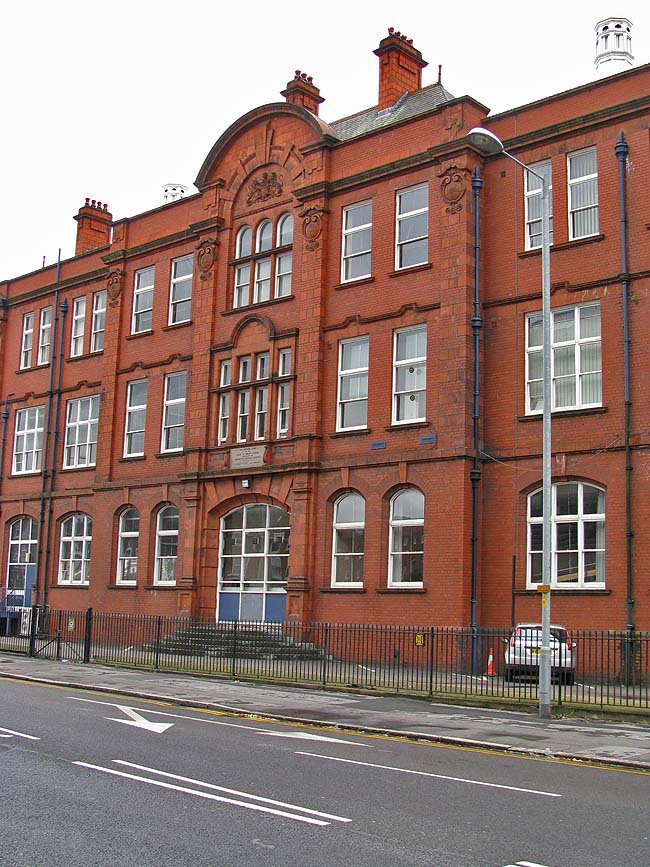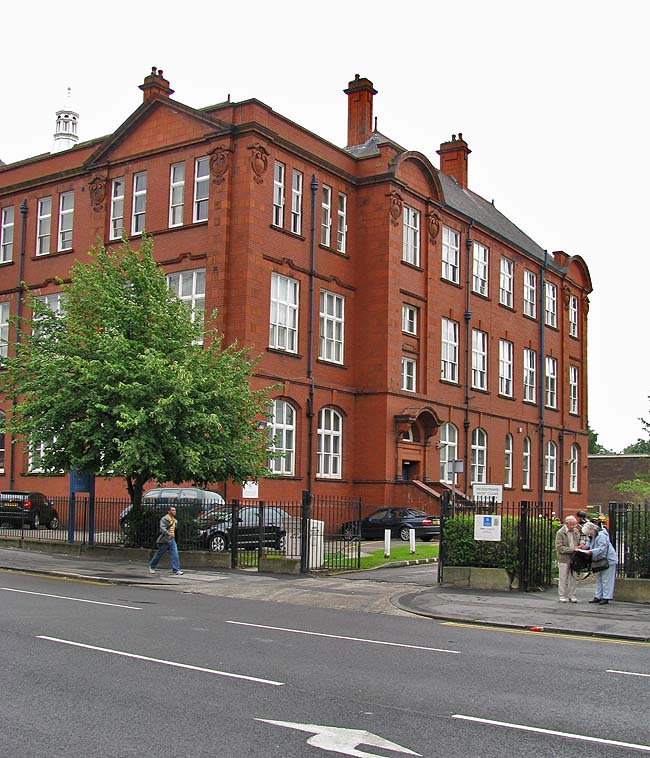|
Elizabeth Gaskell Campus
Manchester Metropolitan University |
 In 1880 a school for training women in Cookery and Laundry work was opened in the basement of the Kendal Milne building on Deansgate, Manchester.  The training of teachers was introduced in 1886.In 1890 the school was incorporated under the Companies Act and was recognised by the Board of Education for the award of a Diploma. The Manchester Education Committee became the governing authority for the school in 1906 and in 1912 created a permanent site and buildings accommodating 300 students for the Manchester College of Domestic Science on Hathersage Road in Chorlton-on-Medlock   Initially the College was intended for the training of teachers of Domestic subjects but the demand for Housekeepers’ courses and for the training of women entering the catering industry resulted in the College providing courses in Demonstration and Institutional Management up to the level of the National Certificate Examination. Whilst the National courses for non-graduate teacher training were of two years duration the course for a Manchester College of Domestic Science student was three years to certificate level. A very large percentage of Domestic Science Teachers in Manchester were trained at Domski, the name by which the College was known to students and in educational circles. But the College’s fame spread far beyond its home city. Because the catchment area for students became nationwide and eventually worldwide, residential accommodation had to be provided in the Halls of Residence, namely Appleby House, Barlowcroft, Parrs Wood House and Greystoke. In 1959 the College expanded
its teacher training to train primary school teachers. New buildings
were erected on the campus and the student capacity was extended to
500. A shortage of women practitioners of Speech Therapy created the
introduction of a Speech Therapy training course in 1960 and formed the
first link with the University of Manchester to which the College later
became affiliated.
 Around this time the College was known as the College of Housecraft but its expansion of courses and subjects dictated a need for a new name. The Governors decided to adopt the name of Elizabeth Gaskell College of Education after the Lady whose Manchester home had been a short distance from the campus. By 1975 the College was offering BEd, BA and BSc courses to Honours level in Home Economics (non Teaching) together with a Post-Graduate Certificate in Education. It is a tribute to the College’s curriculum and the high standards of teaching and student achievement that the University, which had hitherto considered domestic subjects insufficiently academic, eventually accepted and validated the Colleges degree courses Manchester had four teacher
training colleges by the 1970s. Didsbury, Long Millgate, Mather and
John Dalton, the latter being affiliated to the Polytechnic,
In 1976 Manchester education Committee amalgamated Mather and Long Millgate colleges with Elizabeth Gaskell College and the conglomerate was renamed the City of Manchester College of Higher Education with administration moved to the Elizabeth Gaskell campus  (During the 1970s the house called Auldgirth, in Victoria Park was incorporated into the college campus) For a number of years the burgeoning Manchester Polytechnic had coveted the prestigious courses created at Elizabeth Gaskell College and made several attempts to have them transferred. By 1982 Manchester Education Committee in a cost reducing exercise allowed the Polytechnic to take over the College.  Brook House - image contributed by Leslie Moore All the archives of the three colleges were stored in Brook House, a building on the Elizabeth Gaskell site used for lectures and office accommodation. The Polytechnic decided to demolish this building and several observers reported that skips were filled with the buildings contents of documents and disposed of. Thus Manchester’s oldest College was eliminated. The Polytechnic’s successor the Metropolitan University mentions only the names of the institutions it absorbed. |